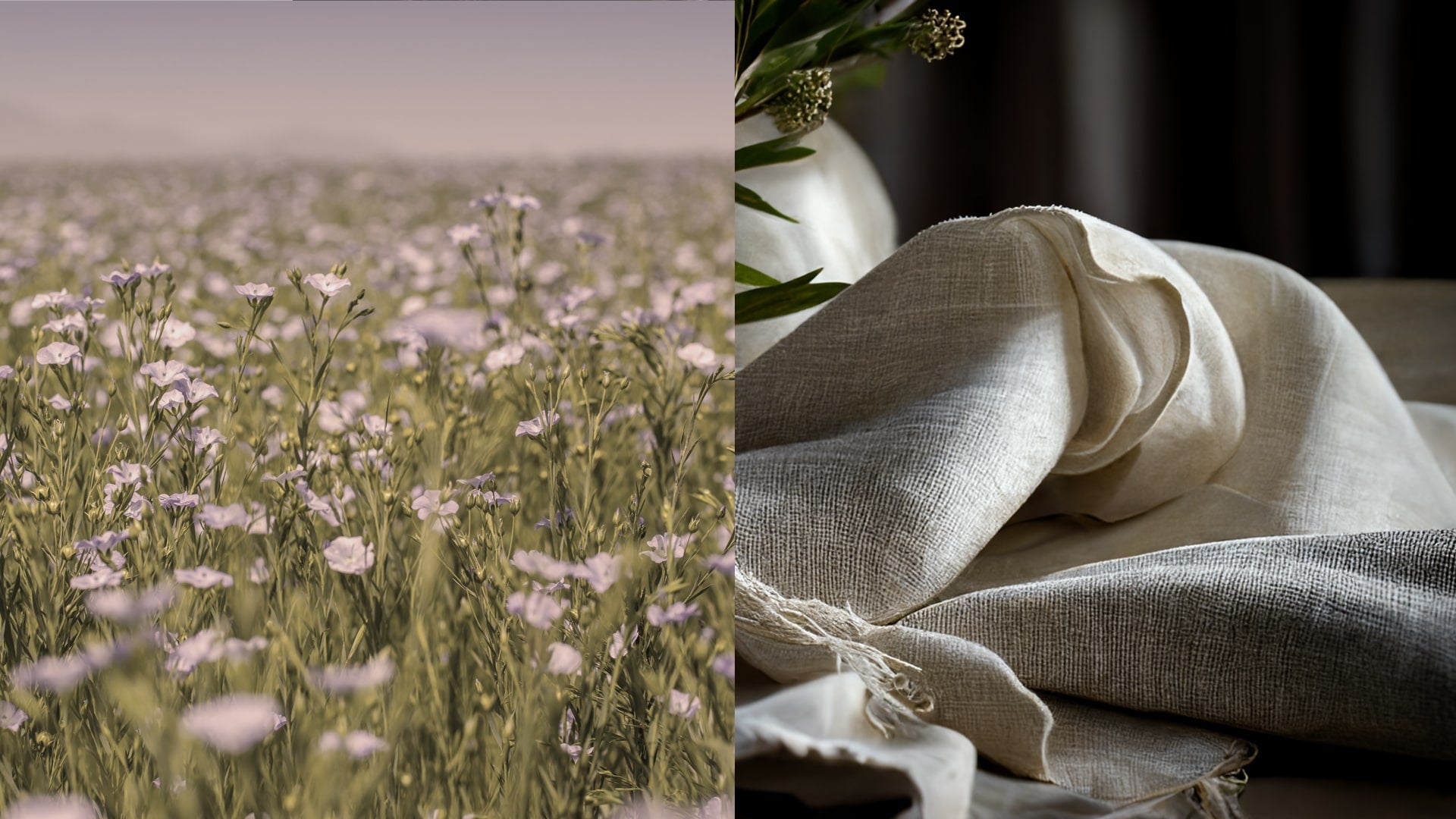What is Linen? Where does it come from?

Linen is a natural and sustainable fabric that has been used for thousands of years. It is made from the fibers of the flax plant and is known for its strength, durability, and luxurious feel. In this blog, we will take an in-depth look at what linen is, where it comes from, and why it's such a popular fabric for clothing and other items. Whether you're interested in fashion, sustainability, or simply the history of fabrics, you'll find something of interest in this comprehensive guide to linen.
What is Linen?

Linen is a type of fabric that is made from the fibers of the flax plant. The flax plant is grown specifically for its fibers, which are then processed and woven into fabric. Linen is known for its strength, durability, and luxurious feel, making it an ideal choice for clothing, bedding, and other household items.
One of the most important characteristics of linen is its natural strength. The fibers of the flax plant are naturally strong and long, which makes them ideal for use in clothing and other items. Linen is also known for its durability, meaning that it can last for many years without losing its quality or appearance. This makes linen an excellent choice for those who are looking for clothing and other items that will stand the test of time.
In addition to its strength and durability, linen is also known for its luxurious feel. Linen is soft and comfortable against the skin, and it has a unique texture that sets it apart from other fabrics. This makes linen a popular choice for clothing and other items that are meant to be worn next to the skin, such as bedsheets and towels.
The History of Linen

Linen has been used for thousands of years and has a long and rich history. It is believed to have originated in the eastern Mediterranean, where it was used by the ancient Egyptians and other civilisations. The flax plant was grown in these regions and its fibers were used to make clothing, household items, and even papyrus scrolls.
Throughout history, linen production has been an important industry in many countries. In medieval Europe, for example, the production of linen was a major source of income for many communities. It was used to make clothing, bedding, and other household items, and was even used as currency in some parts of Europe.
Linen has also played a role in many important events in history. For example, during the American Revolution, the British government imposed a tax on linen imported from Ireland, which was an important source of the fabric. This tax helped to fuel the growing discontent among the American colonies and was one of the factors that led to the American Revolution.
The Production of Linen

Linen production is a complex and time-consuming process that involves several steps. It starts with the growing of the flax plant, which is a long and slender plant that is grown specifically for its fibers. After the flax is harvested, it is processed to separate the fibers from the rest of the plant. This is done through a process called retting, which involves soaking the flax in water to break down the pectin that holds the fibers together.
Once the fibers have been separated, they are then spun into yarn, which is then woven into fabric. There are several different types of flax that are used to make linen, including long-staple flax and short-staple flax. The type of flax used will determine the quality and feel of the final product, with long-staple flax being considered the highest quality.

Linen is different from other fabrics in several key ways. It is stronger and more durable than cotton, for example, and it has a unique texture that sets it apart from other fabrics. It is also more absorbent and dries faster than other fabrics, making it ideal for use in clothing and other items that will come into contact with moisture.
Where Does Linen Come From?

Linen is produced in several different regions around the world, including Europe, Asia, and Africa. Some of the major producers of linen include Ireland, Belgium, France, and China. Each of these regions is known for its unique style and quality of linen, and the different climates and growing conditions in each region can have an impact on the quality and feel of the final product.
It is important to choose high-quality linen, as this will ensure that the fabric is strong, durable, and comfortable. When choosing linen, it is important to consider the source of the fabric, as well as the quality of the fibers and the process used to make the fabric. Some of the best sources of high-quality linen include Ireland and Belgium, which are known for their long history of producing high-quality linen.
In conclusion, linen is a natural and sustainable fabric that has been used for thousands of years. It is made from the fibers of the flax plant and is known for its strength, durability, and luxurious feel. Whether you're interested in fashion, sustainability, or simply the history of fabrics, you'll find something of interest in this comprehensive guide to linen.
At Linen Trail, we are proud to offer a wide range of 100% pure linen clothing and other items. Our products are made from the finest quality linen fibers and are designed to provide comfort, style, and sustainability. Explore our range of products today and experience the many benefits of pure linen for yourself!







